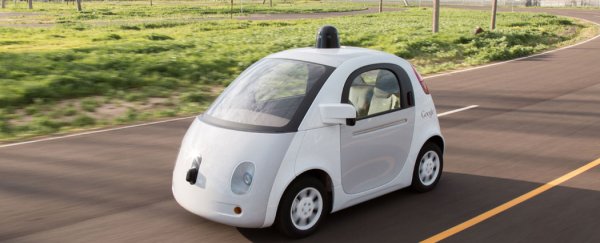Ride-sharing services like Uber and Lyft may dominate today's headlines, but the next auto revolution looks to be even more transformative, with scientists predicting truly huge environmental benefits when self-driving cars like those developed by Google hit the streets en masse.
Researchers from the Berkeley Lab in the US say the kinds of lightweight electric vehicles that will be used for driverless cars by 2030 will offer outstanding benefits in terms of cost efficiency, while slashing global greenhouse emissions by as much as 90 percent. It almost sounds too good to be true, but the findings, published this week in Nature Climate Change, are firmly rooted in science.
According to their analysis, per-kilometre emissions of a 2030 driverless electric vehicle will be 90 percent lower than a 2014 model gasoline-powered private vehicle. And even if the car market goes fully hybrid in the years to come, a driverless taxi in 2030 would still be massively more power-efficient than a privately owned hybrid car in the same year, with greenhouse gas emissions in the range of 63 to 82 percent lower.
The numbers might seem fantastic, but they start to add up when you look at how grossly inefficient our current use of most vehicles on the road is.
First up is vehicle size. Nearly every car on the market seats at least five people (not counting niche categories like two-seater sports cars, or microcars like the Smart range, even though most of the time only one person is in the vehicle. People like the idea of car-pooling, but few actually commit to it, leading to a situation where large and mostly empty cars - guzzling more gasoline than needs to be guzzled - do the majority of people moving.
Add in that people buy cars partly for emotional and aesthetic reasons (in addition to practical considerations, of course) and you end up with lots of big, chunky vehicles that few people actually need. We've all heard the one about the guy who buys an SUV and never takes it out of the neatly maintained laneways of the city? That.
In contrast, the researcher's calculated savings are based on the notion of 'right sizing', where the size of the driverless vehicle you hop into is perfectly suited to your needs for that journey (ie. if you're the sole passenger, a one-seater will suffice, or perhaps a two-seater if you need extra space for things like luggage or shopping).
But right-sizing is only half of the solution. To arrive at the Berkeley Lab's calculated emissions figures, you've also got to take into account projections on what future electricity generation will look like. By 2030, power plants are expected to be using more renewable energy sources and emitting less pollution (at least, that's the idea, right?), subsequently producing less greenhouse emissions - which the researchers took into account in their calculations.
And the best bit? There's a whole host of other efficiencies and innovations that driverless cars are set to deliver, such as 'platooning' - autonomous vehicles driving closely behind one another to cut wind resistance, much like slipstreaming cyclists - optimal route navigation, and better acceleration/braking.
"These are all incremental, but they do add up," said Jeffery Greenblatt, a co-author of the study. "However, we didn't even include these effects in our baseline results, and we still get huge savings without them."
